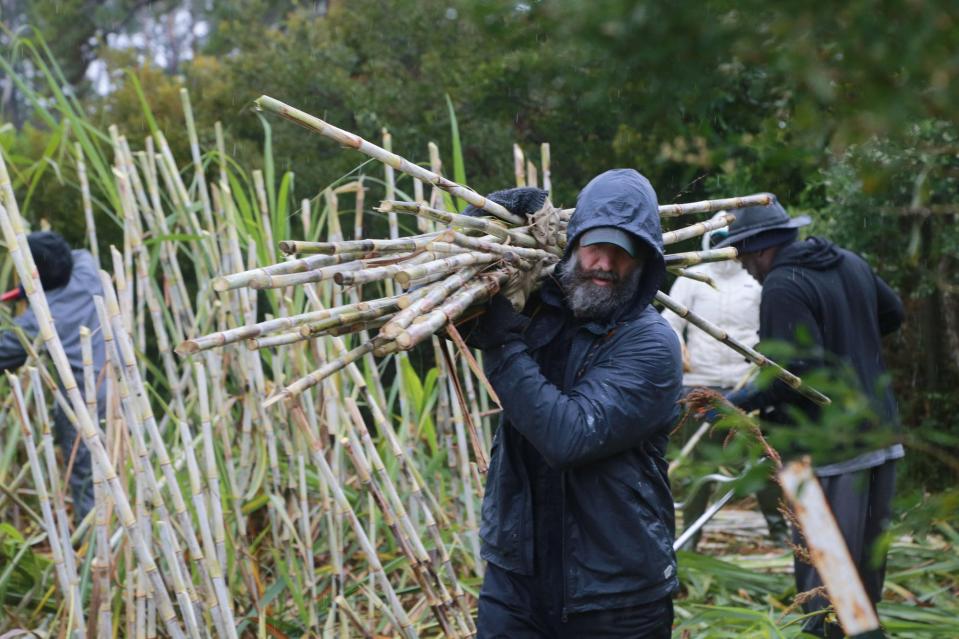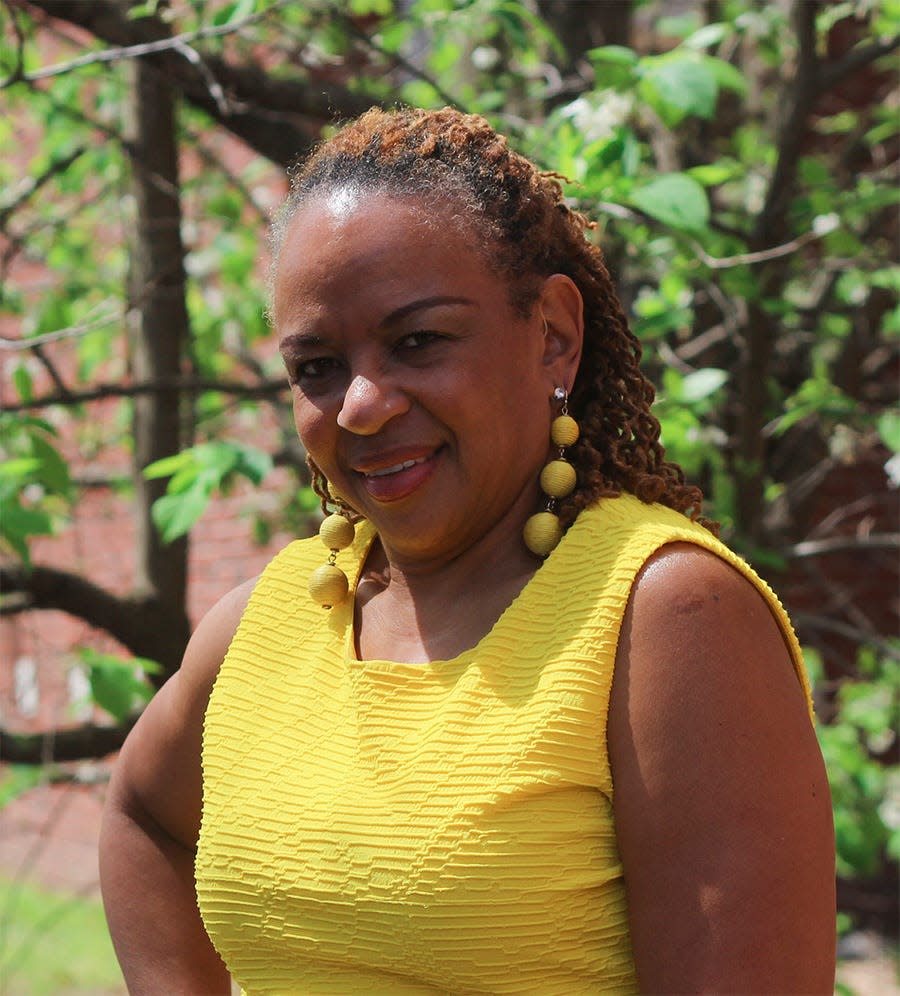Environmental racism is polluting Savannah's predominantly Black neighborhoods. Take action.
This is an opinion commentary by arts and culture columnist Maxine L. Bryant.
Every July 4, the United States celebrates Independence Day. This is the day, in 1776, that the Second Continental Congress adopted the Declaration of Independence signifying separation from Great Britain and the colonies became an independent nation called the United States of America.
A quick search on the internet revealed that “Independence Day is a day of freedom to express our pride in being a nation of hope and prosperity.”
Let’s consider the meaning of the word "freedom." According to the Oxford Dictionary, freedom means having the power to act, speak, or think as one wants without hindrance or restraint. It is the absence of being subjected to a tyrant-type government. It is also the “state of not being subject to or affected by a particular thing.”
In the U.S. there are many factors that affect Blacks more than whites. These things could be considered collateral consequences. In this conversation, collateral consequences are indirect impacts of being Black in the U.S. They are impacts Blacks must contend with in this country—those ways in which Black Americans are “subject to or affected by a particular thing.”
With that said, the question regarding freedom for Black Americans remains relevant.
Today, I will focus on an invisible collateral consequence that impacts the quality of life for many Blacks in the Lowcountry. As the nation celebrates a National Day of Freedom, are Blacks in the Lowcountry free from being subject to or affected by a particular thing?

Toxins in the air we breathe
Consider environmental racism, a particular collateral consequence many Black citizens in the Lowcountry are subjected to. Robert Bullard defines environmental racism as “any policy, practice, or directive that differentially affects or disadvantages (whether intended or unintended) individuals, groups, or communities based on race or color.”
According to a Princeton University study, the U.S. oil and gas Industry releases about 9 million tons of toxic chemicals into the atmosphere annually with much of it being released into communities where Black Americans live. The study also cites that more than 1 million Black Americans live within a half-mile of natural gas facilities and more than 6.7 million Blacks live in counties with oil refineries. This puts Black Americans at a higher risk of cancer and other health ailments.
According to the Princeton Student Climate Initiative, while sea-level rise and climate change affects all who live along the coasts of the Gullah Geechee corridor, which includes North Carolina, South Carolina, Georgia and Florida, Black communities bear the brunt of the impact. A research essay composed by student researchers at Princeton concluded that communities of color are impacted by environmental racism that is manifested in terms of air quality, ocean acidification and natural disasters.
The Georgia Hazardous Site Inventory fact sheet indicates that Georgia has more than 60 toxic sites along its coast. Per the July 2022 list of HSI, 35 of those sites are in Chatham County and about half of the 35 sites encompass neighborhoods where most of the residents are Black, according to Census data.
The HSI divides sites with environmental hazards into five categories:
CLASS I are sites that have known exposure to regulated substances, that have sources of continuing release of contamination, or that are causing serious environmental problems.
CLASS II are sites that require further evaluation before the Environmental Protection Division (EPD) determines if corrective action is needed. In such cases responsible persons are given an opportunity to take voluntary action to clean the site and report back to EPD, at which time the site is either removed from the HIS list or reclassified based on the results.
CLASS III sites are those that do not meet residential clean-up standards but do need some type of corrective action.
CLASS VI sites are already conducting corrective action or have completed the required action under other federal or state authority. However, the site still needs corrective action as determined by the Georgia EPD.
CLASS V sites have a known release that requires corrective action which is being performed.
As of 2022, there are HSI sites in every category in Chatham County and a significant number are in predominantly Black neighborhoods. Hazardous substances found in Chatham County zip codes include lead, benzene, mercury, acetone, chloroform, methyl chloride, arsenic, zinc and nickel. Some of the contaminants impact ground water supply and soil.
So, that’s the problem. What are possible solutions?
Education is key. That’s the purpose of thisr column – to educate and raise awareness so that persons living in impacted communities can have knowledge of potential environmental harms. Remember knowledge is power. Residents can empower themselves to action by first knowing. Neighborhood association meetings offer a great forum to discuss environmental harms.

Turn knowledge into action
Taking action is another key component in terms of solutions. There is power in numbers. Residents in affected areas can come together to contact Georgia's Environmental Protection Division to inquire, monitor and insist that action be taken on businesses that are contributing contaminants to their neighborhoods.
I was recently told of soot that covers many homes on the westside of Savannah. This soot is layered on roofs so thick that it must be raked off. If the soot is layering roofs, imagine what it’s doing to residents who are breathing in the contaminated air?
Taking action involves developing a plan of action. There are local resources that are available to assist with this. The Georgia Southern Water Institute has a program designed to educate residents in areas impacted by poor water quality and teach steps to take to reduce harm.
Additionally, the Georgia Southern Gullah Geechee Cultural Heritage Center has scheduled community meetings called Krat Teet Famlee (family conversations) that are designed to address myriad areas of concern for local residents, including air quality.
Have you heard the saying, “If it’s to be, it’s up to me”? That means each person and each community must take steps to address issues plaguing them. Each person and each community must take steps to be free from being affected by subpar air quality. Being aware of the issues and engaging in conversations designed to identify steps to address subpar air quality are initial steps.
Lowcountry community residents can refuse to be “subject to or affected by” this particular thing-subpar air quality resulting from environmental racism. In this sense, Lowcountry residents can be agents of change in their own communities and demand freedom.
Community action does not absolve companies who contribute to environmental contamination from their responsibility to cease polluting air and water in Black and Brown neighborhoods. Nor does it free them from the responsibility of righting their wrong through financial compensation to victims of their actions.
Righting this wrong in Savannah is a joint effort – if it’s to be for us, it is up to us.
Maxine L. Bryant, Ph.D., is a contributing lifestyles columnist. She is an assistant professor, Department of Criminal Justice & Criminology; director, Center for Africana Studies, and director, Gullah Geechee Cultural Heritage Center at Georgia Southern University, Armstrong Campus.
Contact her at 912-344-3602 or email dr.maxinebryant@gmail.com. See more columns by her at SavannahNow.com/lifestyle/.
This article originally appeared on Savannah Morning News: Environmental racism limits freedoms of Black Americans

